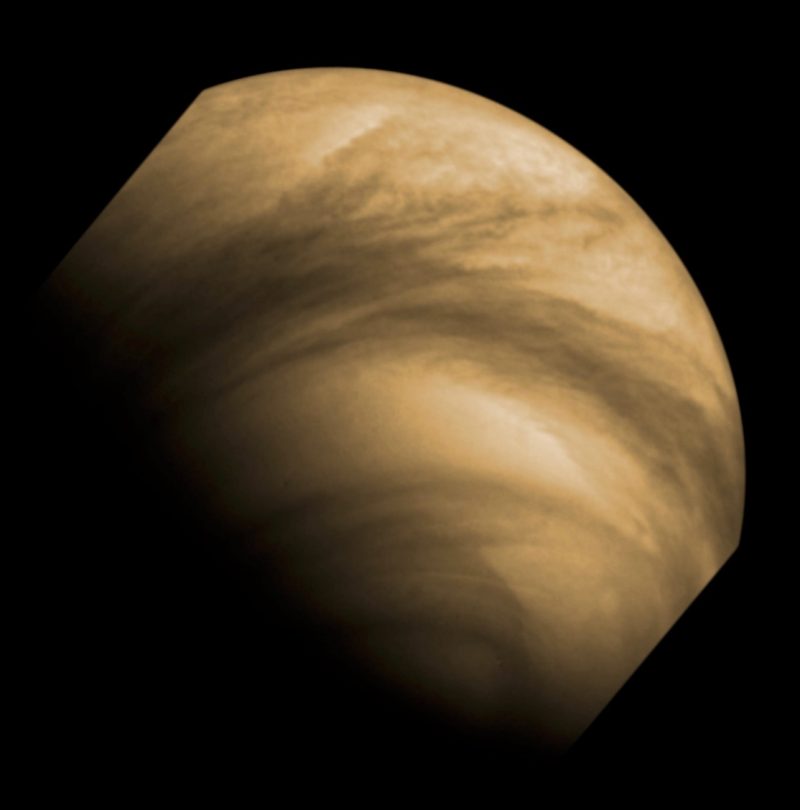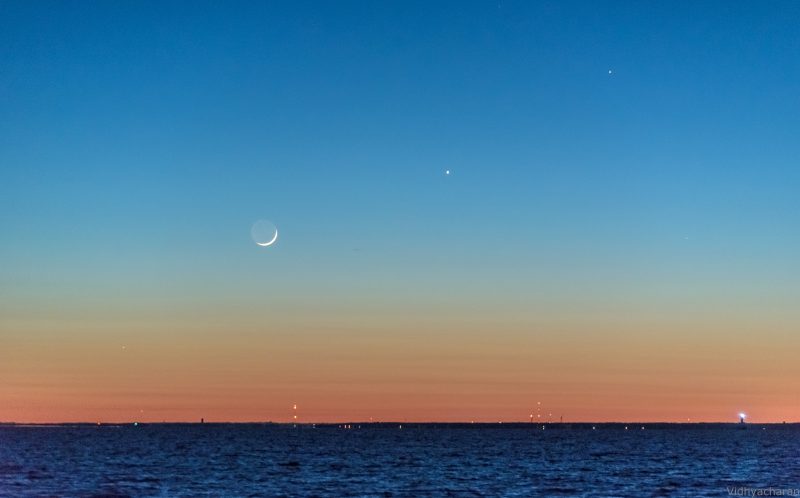
Living earthly microbes inhabit virtually every nook and cranny of our world, including extremely harsh environments like Yellowstone’s hot springs, deep ocean hydrothermal vents and the toxic sludge of polluted areas. Earthly bacteria have also been identified, alive, as high in our atmosphere as 25 miles (40 km) up. Neighboring Venus is a hostile world. Heat trapped by its dense atmosphere makes it hot enough on its surface to melt lead. But a series of space probes – launched between 1962 and 1978 – showed that temperatures and pressures at comparable heights in Venus’ atmosphere (25 miles or 40 km up) don’t preclude the possibility of microbial life. Now an international team of researchers has laid out a case for the atmosphere of Venus as a possible niche for extraterrestrial microbial life.
The paper was published online March 30, 2018, in the peer-reviewed journal Astrobiology.
Biological chemist Rakesh Mogul at California State Polytechnic University, Pomona, is a co-author on the new paper. In a statement, he noted that the cloudy, highly reflective, acidic atmosphere of Venus is composed mostly of carbon dioxide and water droplets containing sulfuric acid. He commented:
On Earth, we know that life can thrive in very acidic conditions, can feed on carbon dioxide, and produce sulfuric acid.
Planetary scientist Sanjay Limaye at the University of Wisconsin led the new study. He’s no stranger to the idea of possible microbial life in Venus’ clouds, possibly in the so-far unexplained dark streaks or patches in the clouds, which are known to absorb ultraviolet light. Limaye said in January 2017, in Astrobiology Magazine:
These are questions that haven’t been fully explored yet and I’m shouting as loud as I can saying that we need to explore them.
In this newest study, scientists do explore them, as best they can without going to Venus.

Limaye pointed out that questions about the possible habitability of Venus’ clouds were first raised in 1967 by noted biophysicist Harold Morowitz and famed astronomer Carl Sagan. But, Limaye said, his recent study was partly inspired by:
… a chance meeting with paper co-author Grzegorz Slowik of Poland’s University of Zielona Góra. Slowik made him aware of bacteria on Earth with light-absorbing properties similar to those of unidentified particles that make up unexplained dark patches observed in the clouds of Venus. Spectroscopic observations, particularly in the ultraviolet, show that the dark patches are composed of concentrated sulfuric acid and other unknown light-absorbing particles.
Those dark patches have been a mystery since they were first observed by ground-based telescopes nearly a century ago … They were studied in more detail by subsequent probes to the planet.
The particles that make up the dark patches have almost the same dimensions as some bacteria on Earth, although the instruments that have sampled Venus’ atmosphere to date are incapable of distinguishing between materials of an organic or inorganic nature. These scientists think it’s possible the patches could be something akin to the algae blooms that occur routinely in the lakes and oceans of Earth. Limaye commented:
Venus has had plenty of time to evolve life on its own.
Pointing to computer models suggesting Venus once had a habitable climate with liquid water on its surface for as long as 2 billion years, he said:
That’s much longer than is believed to have occurred on Mars.
The Wisconsin scientist and his colleagues remain hopeful that the question of life in Venus’ clouds can remain open. They point to ongoing discussions about possible NASA participation in Russia’s Roscosmos Venera-D mission, now slated for the late 2020s. Current plans for Venera-D might include an orbiter, a lander and a NASA-contributed surface station and maneuverable aerial platform.

Bottom line: Scientists have published a new paper, laying out the case for possible microbial life in the clouds of Venus.
Source: Venus’ Spectral Signatures and the Potential for Life in the Clouds











